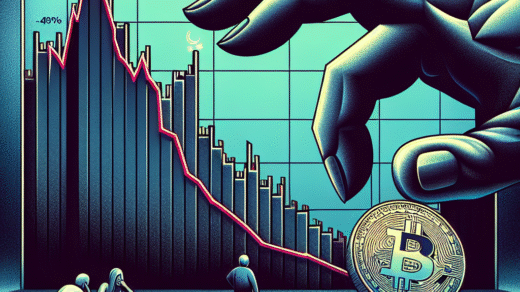“`html
In the ever-evolving landscape of cryptocurrency, Bitcoin (BTC) miners are currently grappling with unprecedented challenges as the network’s hashrate and mining difficulty soar. According to the latest monthly report from TheMinerMag, this surge is significantly tightening profit margins for miners, even as Bitcoin’s price remains relatively stable.
Record Hashrate and Mining Difficulty: What Does It Mean for Miners?
The Bitcoin network has recently hit a staggering mining difficulty level of 126.98 trillion, driven by a 14-day average hashrate of 913.54 exahashes per second (EH/s). This record has made it increasingly difficult for miners to obtain rewards, as the competition heats up and operational costs rise.
In June, transaction fees fell below 1% of block rewards, indicating that miners are earning less from transaction fees as the network becomes more competitive. Furthermore, the hashprice, which reflects the revenue generated per petahash per second, dipped to $52 per PH/s before experiencing a slight recovery.
Escalating Mining Costs: What Is the Future for Bitcoin Miners?
The escalating competition among Bitcoin miners, coupled with rising energy costs, is pushing production expenses to alarming levels. Estimates suggest that the cost of mining a single Bitcoin could exceed $70,000, up from $64,000 in the first quarter of the year. This upward trend in costs is raising concerns about the sustainability of mining operations, especially for smaller players in the market.
Major Players in the Mining Industry: How Are They Adapting?
To stay afloat in this challenging environment, prominent public miners such as MARA Holdings (MARA), CleanSpark (CLSK), Riot Platforms (RIOT), and IREN (IREN) are ramping up their operations. For instance, MARA has increased its hashrate by an impressive 30% in May, while HIVE (HIVE) has added 32% after energizing a new facility in Paraguay. Additionally, Cipher Mining (CIFR) aims for a 70% boost by expanding its Texas operations.
The demand for state-of-the-art ASIC miners is also surging, with prices ranging between $10 and $30 per terahash. However, the payback periods for these operational investments are stretching to as long as two years, assuming a competitive electricity rate of $0.06/kWh. Unfortunately, this rate is out of reach for many miners; for example, Terawulf paid $0.081/kWh in the first quarter, which increased its fleet hashcost by over 25%.
Market Trends: Are Mining Stocks Decoupling from Bitcoin Prices?
Interestingly, mining equities appear to be decoupling from Bitcoin’s price performance. Companies like IREN, Core Scientific (CORZ), and Bit Digital (BTBD) have shown positive performance over the last month, while others like Canaan (CAN) and Bitfarms (BITF) have seen their stocks decline by double digits. This shift suggests that investors are increasingly focusing on the underlying business models of mining companies rather than solely on Bitcoin’s price fluctuations.
Conclusion: Navigating the Future of Bitcoin Mining
The Bitcoin mining industry is facing a transformative period characterized by rising costs, increased competition, and evolving investor sentiment. As miners adapt to these changes, those who can innovate and streamline their operations will likely emerge as leaders in this challenging landscape. For individuals interested in getting involved in cryptocurrency, understanding these dynamics is crucial. Whether you’re considering how to buy Bitcoin or exploring other digital assets, staying informed is key to making sound investment decisions.
For more insights, check out our guides on How to Buy Bitcoin and How to Buy Cryptocurrency.
“`
Meta Description: “Discover how Bitcoin mining costs are skyrocketing as hashrate reaches record levels. Learn about the implications for miners, market trends, and strategies to navigate this evolving landscape. Stay updated with the latest insights in the cryptocurrency world.”







